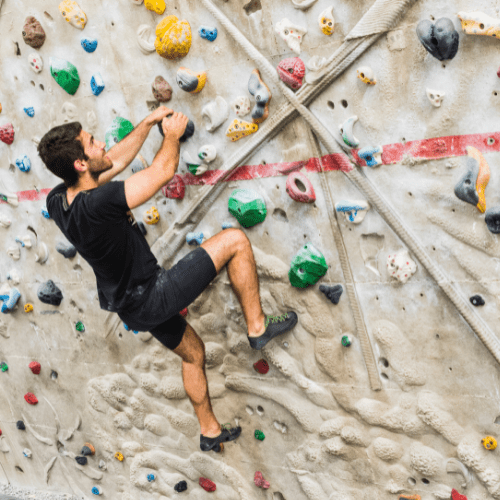
Looking for some indoor activities Singapore to keep you occupied on your day off? Look no further! In this blog post, we will discuss 10 exciting indoor things to do in Singapore that you can enjoy in the comfort of your own home. From terrarium making to laser tag, there is something for everyone! So what are you waiting for? Start planning your next hang out today with the following indoor activities!
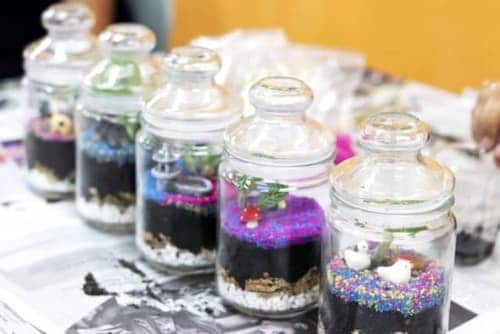
Terrarium workshop is a great indoor activity to add some greenery to your space and it makes beautiful home décor items too! If you’re looking for something creative to do, why not sign up for FunEmpire's terrarium workshop? In this workshop, you will learn how to create your very own mini garden in a glass container and get to take it home at the end of the session!

If you're looking for indoor games that are high on adrenaline, then look no further than laser tag! Gather your friends and family and head down to FunEmpire - one of the best indoor laser tag arenas in Singapore for a fun-filled afternoon of shooting and dodging!

Escape rooms are all the rage nowadays and it makes for a great indoor playground! If you're up for a challenge, try your hand at FunEmpire's escape room with tons of themes and concepts. Can you work with your team, solve the puzzles and make your way out within the time limit?

SaberFit is a new fitness concept that is sweeping Singapore by storm! It is one of the best indoor activities for adults that combines the fun of sword-fighting with a fitness workout. If you're looking for a workout that is different from the usual gym routine, then SaberFit at FunEmpire is perfect for you!
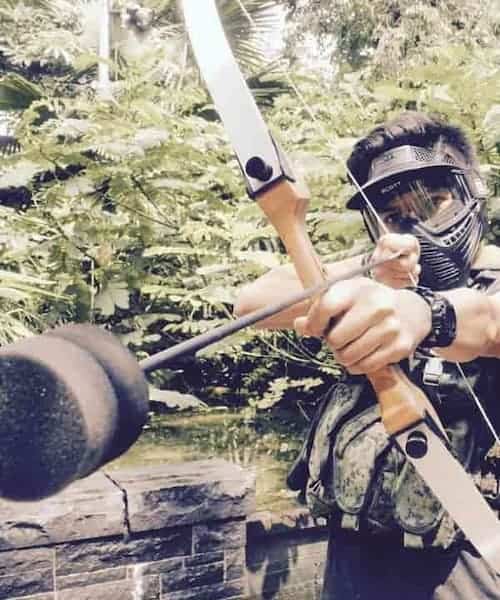
Another great option for indoor games is combat archery tag! It is the perfect activity for groups of friends or family looking to have some competitive fun. The game is a combination of paintball, dodgeball, and archery in a fast-paced game, using special foam-tipped arrows that ensure safety and comfort for a wholesome experience. Head down to FunEmpire and shoot your way to victory!
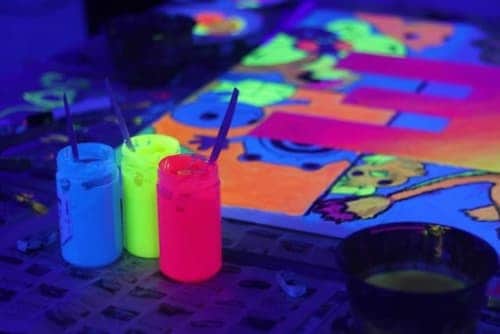
If you're wondering what to do in Singapore when it rains, then art jamming might be right up your alley. At FunEmpire, we provide all the materials you need for a fun painting session - from canvas to paints. All you need to do is bring your creative juices and let the painting flow!

There are plenty of indoor activities for adults in Singapore, but how about families with kids? Go karting is a great choice in this case! It is the perfect way to let loose and have some fun. There are many go-karting tracks in Singapore, but FunEmpire's state-of-the-art track is definitely one of the best. With its advanced timing system and safety features, you can be sure that your family will have a great time!

Bounce Fit is a new fitness craze in Singapore! It is an excellent workout that combines the benefits of trampoline exercise with a fitness routine. Get ready to tone, cardio exercise and core strengthening all in one with fun Bounce Fit workout at FunEmpire!

Bubble Soccer is one of the most unique indoor activities in Singapore! It is a cross between soccer and bubble bump, where players are encased in inflatable bubbles. This makes for a hilarious and chaotic game that is perfect for large groups. So round up your friends and family and head down to FunEmpire for a game of Bubble Soccer!
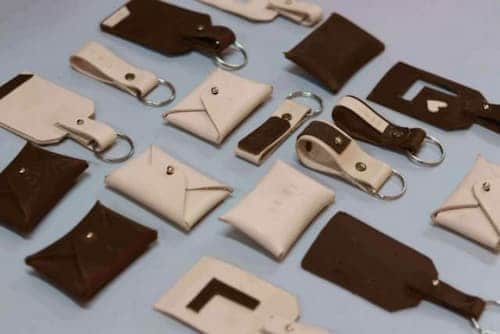
In this leather workshop, you will learn how to make your very own personalized leather products! This is a great indoor activity for those who are looking for something creative and hands-on. At the end of the workshop, you will get to take home your very own handmade creation!
With so many indoor activities Singapore to choose from, there is no excuse to stay cooped up at home! So what are you waiting for? Gather your friends and family and head down to FunEmpire for a day of fun and excitement. We guarantee that you will have a blast with these indoor activities!
In you enjoyed reading this, you might also like:
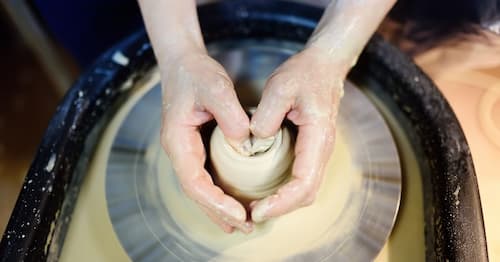
If you're looking to learn pottery Singapore, there's no better place than Singapore. Not only are the classes some of the best in the world, but you'll also get to learn from some of the most talented and experienced potters around. In this article, we'll introduce you to pottery class Singapore and what you can expect from them.
You can also check other Team Building Workshop Singapore for more amazing workshops!
Pottery making is one of the most beautiful and useful arts around. The ceramic making process dates back to humanity's earliest days, connecting us all to something basic and pure. Despite the fact that pottery creation has evolved over time, the basic ceramic class process remains unchanged: shaping clay into something beautiful and useful.
There are several cheap pottery class Singapore. The most popular include pottery wheel classes, which teach you how to create various forms and shapes using a potter's wheel. Pottery painting lessons may be found as well, where you can learn how to paint your own ceramics. There are also pottery studios in Singapore that provide classes for both novice and expert potters.
There are various approaches to transform raw clay into pottery. Pinch pots are a simple craft for novices to make. They're precisely as they sound: clays formed into the shape of a bowl, pot, or dish that have been pinched together. They're usually no larger than the size of your palm and are ideal for gaining a sense of what it's like to work with clay.
With a pottery wheel, a vessel is constructed up using the coiling technique and then spun on the wheel before being smoothed with your hands or other instruments. By carefully drawing the clay to expand the size and form of the vessel, you may thin its walls.
Pottery may be smoothed in a variety of ways. In the most basic technique, a wet sponge is applied to the outside of the object while it spins on the wheel. The sponge is drawn up from top to bottom as it spins. This procedure is repeated several times until the required smoothness is achieved.
After you've finished shaping and smoothing your piece, it'll need to dry for a while before firing. Clay that isn't sufficiently dried before being fired in a kiln can erupt, causing hours of work to be lost. To avoid this, your work should be allowed to air-dry for at least seven days, until it's completely dry. It will be white and firm rather than damp and chilly.
You may choose between a number of colorful glazes in a variety of finishes, from velvety matte to super-glossy, depending on the type of clay you've used. The glaze is a liquid made of finely-ground minerals that adhere to the surface of your piece. The minerals melt when heated to the required temperature and join with the clay, resulting in a fusion and final finish.
The firing of a pottery piece is the final phase in the ceramics workshop. This is where your item is heated to a sufficient temperature to solidify (or cure) both the clay and glaze. A kiln is an oven that's used to fire pottery.
With your thumbs, press into the middle of a ball of clay you've rolled in your hands and held in one, then use the other hand's thumb to push into the center for a hole. Your fingers may start pinching the clay wall repeatedly as you slowly and evenly rotate the ball around. Push your thumb on the inside of the wall and your fingers on the outside. Continue until you reach a desired thinness and evenness in the wall.
To begin, you'll need a flat or curved surface on which to lay down your slab (such as a bowl placed on a mat or board). The use of fabric beneath the clay helps prevent it from sticking to the bowl form. After the form is roughly shaped, coils of clay are laid over it and piled on top to increase its height and breadth. The coils are mixed together with a tool or your hands, after which they may be smoothed out.
In this method, the shape is created from a piece of clay using cutting and scooping tools.
The wet ball of clay is placed steady on the wheel, a hole is cut in the middle, and the wall pinched between the fingers of both hands as they pinch it upward.
When picking a pottery lesson, it's vital to pick one that is appropriate for your skill level. If you're a beginner, consider taking a pottery class with no prior experience required. You may learn how to make a hand-built item out of slabs or coils in this type of class. If you're a seasoned potter, take a more advanced pottery class and make even more complicated containers like cups, bowls, and vases freely on the wheel.
Taking couple pottery classes can be a fun and rewarding experience, whether you're a beginner or more experienced potter. In this guide, we've outlined the basic steps of clay making workshop, as well as some methods that are used to create different shapes. We encourage you to experiment with these techniques to find what works best for you and produces the results that suit your preference.
You can also check other Team Building Workshop Singapore for more amazing workshops!
If you enjoyed reading this, you might also like:

Art Jamming Workshop is a type of art in which people with diverse skills and interests combine their efforts to create something one-of-a-kind. Art Jamming Workshop has been around for decades, but its popularity has increased in recent years as more artists and art enthusiasts discover its benefits! In this post, we'll provide you with all of the information you'll need to have an incredible Art Jamming Workshop!
You can also check other Team Building Workshop Singapore for more amazing workshops!
Art Jamming Singapore with FunEmpire is a new creative experience that is highly encouraged for individuals to improve their creativity, develop patience, and socialize.
Participants in art jamming sessions may be calm after the activity is finished. This is due to the activity's soothing and relaxing qualities. Some art jams might make you want to go outside and take a breath of fresh air or even visit an Art Jam Studio. Examine your ideas, then share them with others who might help you de-stress. This may benefit your team's morale and mental health.
The most important benefit of team-building activities is that they help employees form personal connections with one another by allowing them to get to know one other on a more intimate level. Furthermore, Art Jamming may assist in the creation of long-term friendships by strengthening personal interactions.
Employees may participate in a Collaborative Art Jam Singapore session every day to stay productive and innovative. These games enhance cognitive functioning while also encouraging workers to become more interested in their work. Team building exercises, for example, may help to reduce staff anxiety by bringing the team together and establishing a sense of worth.
This Art Jamming session is meant to assist group members in developing a bond and being more productive. Another significant advantage of the Art Jamming Workshop is that it encourages team members to push themselves outside of their comfort zones. When your thoughts deviate from the norm, you learn. This is vital for growth and innovation.
Making something unique via Art Jamming is a fantastic method to boost self-esteem and achieve a feeling of accomplishment. There are no boundaries or limitations in art jamming workshops, which provide a safe atmosphere with no fear of being judged. You'll be surprised and delighted by your own creation.
FunEmpire's Virtual Art Jamming Workshop is a great way for individuals to get together and enjoy themselves while being at ease in their own homes. Participants will receive all materials by mail, and the Art Session will be conducted via Zoom or other video conferencing software.
Individual Canvas Art Jamming is an event that promotes self-expression by individuals while collaborating in a group. Individual creativity and expression offer a number of advantages, including self-expression, innovation, and communication. During this Individual Canvas Art Jamming workshop, you may create your creative ideas and network with other artists.
Each participant is given his or her own canvas, but the overall design must be incorporated into each piece. In this case, collaboration and communication are both required in order to achieve a cohesive work of art. You may collaborate on art via email, chat, or video conference. You may even visit a Canvas Art Studio together as a group.
Participants in the One-of-a-kind Art Tote Bag Making Workshops at Art Jamming Singapore Deal will be able to paint and make their own tote bag design, making it a wonderful and one-of-a-kind present for family and friends!
The Neon Painting Workshop Singapore is a recent craze in Singapore. It employs fluorescing paint instead of ink or paint. The only difference, however, is that the Neon Art Jamming Workshops we provide are held in a dark-lit room with neon illumination so participants can create their own designs. Colors, on the other hand, may be combined and modified to create a wide range of hues.
A sketch of the composition's structure might be useful for gaining a big picture of the piece's architecture. Drawing on canvas first is beneficial because you may draw your work more quickly and economically (and less expensive) with a pencil or charcoal than after painting, when compared to oils.
If you want to save money and have more colors to work with, make your own color combinations. You may produce any hue imaginable by mixing any of the three primary hues. The following colors should be on your list: red, blue, yellow, black, and white. You may use whatever paints you want to make mixtures.
Rinse your brushes in a mild solution of soap and water after each painting to remove the paint residues. It's difficult to remove dried paint from the bristles. Instead of hanging your brushes up, lay them flat to dry to prevent the glue from loosening. The wood will expand as a result of the water, causing the lacquer on the
It's critical to keep in mind while making a piece of art. Your work, as well as your artistic adventure, is unique to you. It's unwise to compare your work to that of a more experienced artist. In their own ways, both art and the artist's development are one-of-a-kind.
Art Jamming is a way for you to get your feelings out through your work, which you may utilize to convey yourself and creativity. Art Jamming is a vital technique that artists have used throughout history, regardless of their age, race, or origin.
Keeping your art materials on hand is a smart habit for any artist. You'll always have what you need, so seeking for stuff will be less time consuming. Sketchbooks, paper, pencils, and paintbrushes are available from art supply shops and Art Jamming Studios.
Painting is a tough craft to master, and with practice comes improvement. Even if you're just painting in shades of color or odd forms, aim to complete something every day. The more you use your brush and paints, the easier it will be for you to create things.
Art Jamming Singapore 2022 is a wonderful way to spend some time with your family or friends. Our workshops cater to all levels of artists and offer a variety of activities that fit any skill level, so no matter how experienced or novice you are, there's something for you!
You can also check other Team Building Workshop Singapore for more amazing workshops!
If you enjoyed reading this, you might also like:
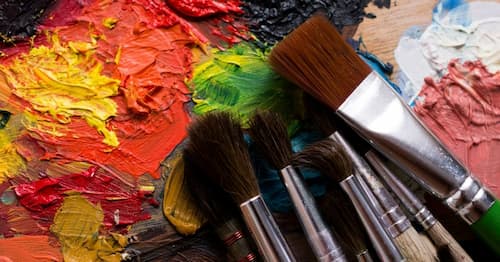
Do you have any prior knowledge with acrylic paint? Acrylic paint is one of the most widely used paints. It's made up of acrylic and has a durable, long-lasting finish. Some acrylics can be combined with watercolor or another type of acrylic to create different effects. This post will teach you how to utilize acrylic paint in your arts and crafts projects.
You can also check other Virtual Workshop Singapore for more amazing online activities!
Acrylic paints are popular among both amateurs and professionals due to their flexibility. They dry quickly and may be thinned or washed with water, making them ideal for beginners!
Student grade acrylic paints are more cost-effective than professional grade paints since they use lesser pure pigments rather than the expensive ones used by experts. They also contain greater amounts of additives and extenders.
Artist grade acrylic paints are more fade-resistant, but they still have a high potential of fading over time. The more colors you include, the less vibrant your paintings will be. Artist paints are well known for emphasizing each color's individuality.
Heavy Body paints are the thickest and heftiest of the other acrylic paint types, with a smooth finish. They have a mild buttery feel, similar to oil paints, and they're easily applied to hard surfaces. They take well to hard surfaces.
Soft Body paints feel silkier and less like yogurt than other kinds, making them ideal for layering with mediums while retaining enough substance to paint freely and rapidly.
Fluid paints are smooth, creamy in texture and excellent for painting or staining. They have a pleasant flow to them when utilized in a bottle, making them perfect for glazing and intricate work.
Acrylic ink is the most liquid of the acrylic paints. It's made up of tiny, ultra-fine particles suspended in an unusual acrylic emulsion that flows like water. Acrylic Ink has a glossy shine and is brightly colored after it's dry. It may be produced with an airbrush pen or brush to get it.
Open Paints dry slowly, making it simple to paint wet-into-wet and blend colors on the surface of your work. They're great for oil painters who just want to use oils.
Interactive Acrylics are one-of-a-kind, fast-drying acrylic with the same characteristics as other high quality, artist grade material. They also include an unusual "unlocking solution," a liquid that rewets dried interactive acrylic and slows drying by adding few drops to wet paint.
Acrylic gouache is a creamy paint with a matte velvet appearance. Brush marks are less apparent with this paint than they are with other artists' paints, which makes it an ideal choice for painting large areas of flat color at once. Consider utilizing gouache if you want to cover an entire wall in one go.
Acrylic markers are paint marker pens that may be used to combine painting and drawing techniques. Acrylic markers are water-resistant, fade-resistant, and fast-drying. Even bright surfaces will be stained or painted with acrylic markers and bonded to most materials, including metals, with a vibrant tone or color.
Acrylic spray paint is a versatile paint with a wide range of usages. If you're going to use one that includes solvent, make sure it has a fume mask or take place outside. Water-based paints do not produce hazardous fumes, making them perfect for indoor projects.
The tools you use will have a significant impact on the quality of your work. Acrylic painting necessitates the usage of a variety of brushes ranging from tiny to huge for various techniques, as well as many hues. When applying a thick layer of paint, utilize a brush with firm bristles. Use a water-color brush for washing effects, for example. A Filbert paint brush is an excellent all-purpose tool that comes in either a straight or circular form to suit your requirements.
Make a “sketch” in paint before painting by using a color that complements the palette you wish to use. Any hints of the underpainting will be hidden if you choose an opaque acrylic.
Acrylic paint palettes are perfect for combining and matching colors on non-stick surfaces, such as a broad plate or a tray with regions. If you're working with thick paints, using a big palette may be more useful. You may use these broad-area palettes to mix various hues in big swaths, like this. A palette with wells will come in handy if you're working with paint with a higher viscosity. Using a huge flat palette and low-viscosity paint might result in your colors mixing or trickling off the surface.
This is a fantastic method for beginners. Create separate forms for each color or tone and paint them in the same way you would if you were painting your own DIY paint-by-numbers artwork. This is a simple approach that may be used with monochromatic palettes or a wide range of hues.
Instead of mixing the two hues completely, just mix them with your palette knife for a few seconds before using the combined but somewhat muddled colors to paint on your canvas. When you add paint to a blank surface, you'll be surprised at how many distinct tones there are.
What are you waiting for now that you know a little more about acrylic paints? Get to work on your next masterpiece right now! Acrylics may be used by both beginners and experts. Practice makes perfect, so stick with it and try new techniques if you want to improve as an artist.
You can also check other Virtual Workshop Singapore for more amazing online activities!
If you enjoyed reading this, you might also like:
